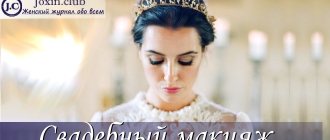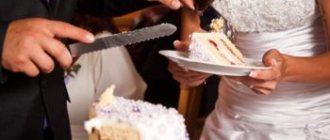Dancing can be considered a universal hobby. There are several benefits to this hobby. Classes improve the outline of the silhouette, provide a healing effect, add grace to movements, and give a boost of energy and good mood. The popularity of this type of fitness is growing rapidly; in every city and town there are schools and studios that teach the basics of choreography. But many would like to know how to learn to dance at home. Visiting fitness centers and schools can create certain difficulties. Some people don’t have the time or money for this, while others feel embarrassed. In any case, you need to understand that self-study at home will provide positive results if you approach it competently and responsibly.
Pros and cons of staging a wedding dance yourself
Preparation for a wedding dance on your own has both its positive and negative sides.
Advantages:
- If the bride and groom have nothing to do with the choreography, then they may begin to feel shy in the presence of others. As a result, you won’t be able to relax and study the composition properly. If you prepare on your own, this will not happen and you will have time to get used to the idea that you will have to speak in public on your wedding day.
- The spouses will be able to thoroughly analyze all the movements, analyze their mistakes, study the partner’s abilities and choose the combinations that are most suitable for both. Ultimately, this exciting and creative process will help fill the dance with life.
- Saving money on a choreographer.
- No need to waste time traveling to the dance studio. Rehearsals can be done at home.
- Videos with your favorite compositions are available at home, which can be repeated as many times as you like.
- By learning new things together, you will be able to become a full-fledged dancing couple on your wedding day.
Flaws:
- Serious motivation is needed, otherwise the slightest misunderstanding between the bride and groom risks resulting in the cessation of classes.
- It is difficult to calculate your own strength by choosing a composition and melody that matches the physical fitness of both participants.
- Lots of nuances to consider.
- There is no one to explain exactly what to do and how to perform certain figures. This can lead to a lack of interaction in the couple.
- Rehearsing at home does not create the right atmosphere that would charge you with energy and positivity. In such an environment, at the first failures one can easily give up.
Who to contact?
It is best to entrust the production to a professional. This could be a private choreographer, school or dance studio . Specialists will take into account your wishes, offer options and work with you on all the necessary movements and their sequence.
The main advantage of a production under the guidance of a teacher will be classes in a spacious room , which the school or studio will certainly provide. It’s worth honing your skills in a fairly large hall, because at the actual celebration the newlyweds will have the entire dance floor available for their wedding dance.
Reference! There are wedding dance studios focused specifically on working with newlyweds.
When should you start preparing?
It all depends on the presence or absence of experience of the bride and groom.
If the newlyweds have at least a little experience, then they can learn a wedding dance in 1-2 weeks. Rehearsals in this case can be held once every 3 days for 1 hour. If there is no dance practice, then the optimal time is 1.5-2 months. During this period, the couple must select a composition, choose suitable music and learn the movements, not forgetting to form them into a beautiful dance. If you don’t plan to perform any complex lifts, turns and all other elements at the wedding, then a month is enough for preparation.
If you want to learn to dance, dance a lot and everywhere
In mastering any skill, practice is necessary to ensure consolidation and improvement of acquired abilities. This applies primarily to dancing. Don't think that regular practice is enough. Don't limit yourself to lessons. Every opportunity to hone your skills should be taken.
While doing household chores you have to move a lot. Try incorporating dance steps into your movements. It's not as difficult as it might seem at first glance. Gradually, you will not only perfectly master all the dance movements, but also provide ideal beauty and even seductive magic to your gait and gestures.
An excellent option for improving your skills would be going to discos and nightclubs. On the dance floor you can show off the skills you've learned in class. The admiration of others will add confidence and desire to continue studying. You can also show off your skills at family celebrations, friendly parties, picnics, etc. In your free time, turn on your favorite music and enjoy a beautiful dance.
Which wedding dance to choose
The dance style should be chosen taking into account the following:
- Your wishes.
- The character of both partners.
- Physical training.
- The presence or absence of dance experience.
- Time remaining until the holiday.
- The style of the wedding itself, for example, if it is classic, then Latin will not be entirely appropriate.
- Places where the banquet is planned to be held.
- Wedding dress.
Waltz
The most popular dance of newlyweds is the waltz, which almost all couples can perform. It comes in 4 types - Viennese, slow (baston), tango and figure.
Those who have at least some experience in choreography can pay attention to the Viennese waltz , which requires endurance, flexibility and plasticity from the performers.
Baston , being elegant and discreet, is more suitable for romantic couples.
Tango is the solution for passionate individuals who want their first dance to be remembered for a long time.
The simplest, but at the same time beautiful movements are characteristic of the figure waltz . It is especially relevant when the bride plans to get married in a fluffy wedding dress with a wide crinoline, and the groom in a classic suit.
Here is an example of a classic Viennese waltz:
Latina
For expressive people, the ideal choice would be fiery salsa and bachata, passionate paso doble and reggaeton, romantic rumba and spectacular cha-cha-cha.
You don’t need to be a professional to perform their basic movements, turns and steps beautifully. They will allow the newlyweds to show their guests the whole range of feelings that fill both of them.
It is very important that in this case, if one of the partners forgets some figures at the wedding, you can calmly improvise. There are no strict requirements for clothing and shoes here - comfortable low-heeled shoes, a dress for the bride, and an elegant suit for the groom - that's all you need!
This video shows an example of a cha-cha-cha wedding dance:
Mix
Fans of the unusual can be offered to mix movements from different styles - classic, Latin, retro. From the first it will be beautiful to take rotations, from the second - steps, and from the last - unusual supports.
This mix will really surprise the guests and add a special touch to the wedding. To be even more original, it’s just right to use music that matches their tempo for different figures, which will beautifully emphasize the transition from one style to another.
This is what the wedding mix looks like:
Retro
Boogie-woogie, elegant foxtrot and extreme rock and roll - these dances can be easily choreographed if the groom is tall and strong, and the bride is small and thin. In this case, you will need to do a lot, and sometimes very complex, supports.
Another obstacle will be the need to constantly be in motion, because such dances are based on jumping, circling, and various transitions. But they are relevant only if there is free space in the banquet hall.
Wedding dance in the style of the 20s:
Price issue. About the cost of classes
What the cost of studying? Prices for a wedding performance for newlyweds will depend on the skills of the newlyweds, the complexity of the chosen dance and the teachers.
So, by contacting a school or studio, you can try to master the movements in one lesson (2 hours) , paying 3000-4000 rubles. Longer training (5 lessons) will cost 7,000-10,000 rubles. Thorough preparation (10 lessons) – 15,000-20,000 rubles.
Staging with private dance teachers will be inexpensive. The cost of an hour varies from 700 to 1500 rubles.
Attention! For some private choreographers, the rental of a rehearsal room is already included in the cost of training.
What song to perform the first wedding dance to?
It’s worth looking for suitable music for dancing after choosing it. For ballroom performance, the most successful compositions will be the following:
- Sin Ti – Olga Tanon (samba)
- Tango_Forte – Duplex_Inc (tango)
- Am Who I Am – Lara FabianI (rumba)
- Vom Tod – Das Lied (paso doble)
- Obsession – Aventura (salsa)
- Abreme la Puerta – Antony Santos (bachata)
- Ain't Nothing W – Robert Randolph & The Family Band (jive).
The following melodies will help you waltz beautifully:
- My affectionate and gentle animal – Zara
- Blut – Wiener
- Hfchelbels Cannon – Louis Clark
- Sans voir le jour – Enrico Macias
- Baston - Alexander Rosembaum.
Those who choose a retro style production should listen to the following compositions:
- Angels – the Baseballs (rock and roll)
- Jailhouse Rock – Elvis Presley (boogie-woogie)
- Detroit Swing City – Liberation Records (foxtrot)
- The Great Gatsby – Gunther Noris
- Candyman – Christina Aguilera.
Having chosen the “mix” style, it will be interesting to combine musical compositions from the list of retro, Latin and classical.
Shakira and "Serpentine" by Loie Fuller
Loie Fuller performs the Serpentine dance. Circa 1902 Library of Congress
Shakira during the "Oral Fixation" tour. 2006–2007 © Splinter Films
The stage effects invented by the American Loie Fuller at the beginning of the 20th century still inspire choreographers. And her most famous dance, “Serpentine,” was borrowed by singer Shakira for her performance with the song “No.”
"Serpentine" by Loie Fuller
The song “No” performed by Shakira (fragment)
What to consider when choreographing a dance
Room. First of all, attention is paid to the space that will be allocated for this.
If the area is small, then you won’t be able to waltz along it as needed, moving from side to side. In this case, it is more appropriate to come up with some more compact movements. A dance with high supports, typical of Latin and rock and roll, can be ruined by low ceilings in the room. Thus, the bride will not be able to jump into the groom’s arms, which will lead to not all elements being completed.
Floor. The material from which the floor of the hall is made is also of great importance. It will be very difficult to navigate if it is tiled. In this case, you should think about comfortable shoes without heels, which are not suitable for all dance styles.
If the flooring is parquet, then you can safely take figures from Latin, waltz, and retro. But since it can creak, it is better to rub the shoes of both partners with special compounds. Also, when dancing on it, there is a high risk that the newlyweds will lag behind each other due to poor gliding.
Shoes. It is better to exchange the bride's wedding shoes for a spare, stable pair. These can be ballet shoes, models with wedges or heels.
To avoid injuring your partner due to inexperience, it is better to avoid high heels. You should not choose them even when there is a small difference in height between the newlyweds, so that the partner does not end up taller. In this case, it will be very difficult to perform complex choreographic elements.
Guests. The location of the guests must also be taken into account. If the tables are placed on one side, then it is unacceptable for the couple to turn their backs to the audience. Then the steps should be taken from left to right or in the other direction. When placing them around the entire perimeter of the hall, you need to select circular movements so that everyone can see the bride and groom.
Photo and video shooting. Don’t forget about the work of a videographer with a photographer. In order for them to have the opportunity to capture the heroes of the occasion in an interesting and high-quality manner, they need to know in advance about their location in the banquet hall. But usually photography takes place from the right or left side.
Duration. A wedding dance usually lasts no longer than 2-3 minutes. For untrained performers, spinning on the floor for longer will be difficult - they will experience shortness of breath and begin to sweat. It won’t take long for the wedding dress to deteriorate, the style of which also plays an important role in the staging of the wedding dance.
Cloth. If the outfit is too loose, then you can get tangled in it and fall. It will also be inconvenient to support the groom when the bride needs to be circled and picked up.
However, too narrow long models are not an option, since it will be difficult to move freely around the hall in them. This way you won’t be able to repeat either the graceful swings of your legs or the sharp transitions in a waltz. In this case, the dance risks turning into standing still.
A short wedding dress gives complete freedom of imagination, allowing you to fulfill absolutely all the planned elements.
Air France and the longest kiss in ballet
Laurent Hilaire and Isabelle Guerin in the ballet "The Park". Choreographer Angelin Preljocaj. 1994 © Opera de Paris
A still from an Air France commercial. 2011 © Air France
One of the most famous scenes in modern ballet is “The Kiss” from “The Park” (1994) by Angelena Preljocaja. It is considered the longest kiss scene in ballet. . Air France filmed its version of this kiss - with Benjamin Millepied, the former director of the Paris Opera ballet troupe.
“The Kiss” from the play “The Park” by Angelin Preljocaj
Air France commercial
How to organize rehearsals correctly: useful tips
Here are some useful tips to help you organize your rehearsals correctly:
No more than 3 days , otherwise the memorized movements may be forgotten.
They must be carried out
in shoes and clothes that are as similar as possible to what will be at the wedding.
The groom should wear a suit and shoes, the bride, if a wedding dress with a wide bottom is chosen, should wear a corset and a skirt with a petticoat and rings. It is better to do the same in the case of a narrow model, which takes time to get used to. Don’t forget about the train, which requires you to rehearse while constantly holding something in your hand. If you really want to learn how to dance beautifully, then you must work on your mistakes. Each rehearsal should be videotaped. And the next lesson should begin with the analysis of the video - steps, turns, lifts, eliminating the mistakes made. At the same time, it is very important to imagine that every workout is an appearance on stage.
These are the features of independent preparation of a wedding dance, if taken into account, you will be able to adequately cope with the task.
How to learn to dance beautifully at home
Those who want to know how to learn to dance at home should learn a few rules that will allow you to achieve results faster, avoid disappointment, and give up further training.
Do exercises and stretching
Muscles, ligaments, joints require preparation. If you warm them up well, performing movements, even complex ones, will be much easier. In addition, warming up eliminates the risk of injury in active dancing with physical activity. Complexes for such charging can be found on resources on the Internet.
Learn the movements step by step
Choreography is available to everyone. But you don’t need to try to master all its basics at once. Step-by-step dance lessons for beginners are much more effective. Each movement must be perfected before moving on. You will bring its implementation to automaticity. From now on, you won’t have to think about how to move correctly; your body will handle this task on its own.
Start with easy dances
Even if you really like complex dances that include many elements, you should not start mastering them at first. The lack of significant results in the initial period can cause a decline in enthusiasm, loss of confidence in one’s abilities, and termination of classes. Learn simple dance lessons for beginners first. When you study them well, you will already have formed faith in your own abilities. This will help you learn to dance in any style you like without any problems.
Eliminate the risk of overload. Physical activity should be increased gradually. Otherwise, overwork will occur, which will not allow you to continue effective training, and a reluctance to continue training will form. The optimal schedule is 4-5 lessons per week for 40 minutes, or 3-4 lessons lasting 60-70 minutes.
Choose inspiring music and videos
The choice of music needs to be given special attention. It should make you want to move and energize you. Such accompaniment will provide invaluable assistance in learning. It will be much easier to master the movements while listening to inspiring music. It will stimulate interest in dancing and the desire to continue classes. At first, such an incentive is necessary.
Practice your dance moves in front of the mirror
The mirror is the ideal assistant. It is quite difficult to master the basics of dancing without it. You will not be able to understand with your feelings, sensations whether you are doing the movement correctly or making mistakes. Incorrect execution of steps will gradually become entrenched and it will be more difficult to relearn. An impartial witness, the mirror will show all inaccuracies and allow them to be corrected immediately. If you can’t install a large canvas, record your workouts on video. Then review and evaluate the correctness of the movements.
David Bowie and the Bauhaus Ballet
Costumes by Oscar Schlemmer for the Triadic Ballet. Germany, 1920s thecharnelhouse.org
David Bowie in stage costume. 1973 ©Masayoshi Sukita / The David Bowie Archive / V&A
In 1922, the German artist Oskar Schlemmer staged the “Triadic Ballet” at the Bauhaus school, based on the interaction of geometric figures. Fifty years later, Schlemmer's ideas were reflected in David Bowie's costume, created for him by Japanese designer Kansai Yamamoto.
Charlie Chaplin and Vaslav Nijinsky
Fragment from Vaslav Nijinsky’s ballet “The Afternoon of a Faun.” 1912 © Heritage Images / Diomedia
A still from Charlie Chaplin's film Sunnyside Up. 1919 First National Pictures / Wikimedia Commons
In 1912, Vaslav Nijinsky's controversial ballet "The Afternoon of a Faun" was released. " The Afternoon of a Faun" is a one-act ballet that Vaslav Nijinsky staged in 1912 in Paris to the music of Claude Debussy. The sets and costumes were made by Leon Bakst. Nijinsky's choreography - unusual, angular, with long poses reminiscent of ancient Greek bas-reliefs or vase paintings - split the audience in two: some were delighted, others were furious. “The Faun” was accused of vileness, animal eroticism, rudeness and shamelessness, and in 1919 Charlie Chaplin included a dream scene in his film “Sunny Side”, in which the plot of the ballet is clearly traced and many of its dance movements are playfully copied.
Charlie Chaplin's film "Sunny Side" (fragment)











